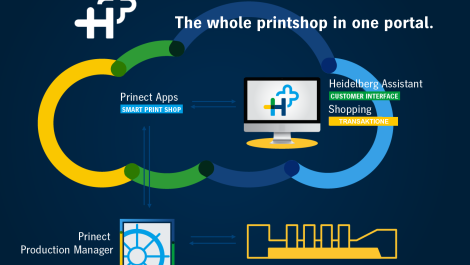The weekly Verdigris blog by Laurel Brunner
Environmental impact reporting is not yet regulated nor is it common that companies come clean on their vulnerability to green rules. But that is starting to change as regulation and consumer pressures get more onerous. Recently one of the world’s biggest companies, Exxon Mobile, has come under shareholder pressure to be more open about its environmental liabilities and risks. Exxon is one of a rising number of companies in the energy sector who are informing shareholders about how they plan to adapt to new energy systems, systems that are not necessarily based on high carbon fuel sources. This is about disclosing risk, but it is interesting for other reasons: it shows that shareholder pressure can work; it shows that large oil and gas companies are taking seriously climate change and the need for environmental accountability.
The printing and publishing industry includes some pretty large corporations, and is served by some massive entities, particularly in digital printing. It obviously provides services to the likes of Exxon Mobile and its cohort. Some of these companies are already pretty open about their environmental policies: for some the environment and sustainability are entrenched in their corporate cultures. For those who have not got green blood flowing through their corporate veins, the Exxon Mobile commitment shows that large corporates are starting to think about it. The threat of climate change and the anxieties of shareholders, citizens and governments are putting unprecedented pressure on all companies, publicly traded or otherwise.
Organisations in the graphic arts must anticipate how they should position themselves, if shareholders and customers start asking what they intend to do to mitigate environmental impacts and if regulations start to tighten. Customers who have committed to environmental reporting will pressure service providers for data. This will force printers to either deliver data on their carbon footprints or risk losing customers and revenues.
The danger that shareholders will move their investments to alternatives where the environmental positions are more transparent, and that customers will place their business elsewhere is real. Neither scenario is particularly pretty because both will gradually starve companies of investment capital putting them increasingly at risk. This sort of risk exposure is why environmental data is being reported in stock market listings and in annual reports. Even organisations not particularly associated with green technologies, environmental management or energy generation are taking steps to improve environmental impact data capture.
Companies must have data to support their environmental claims. Printing and publishing firms, and of course their suppliers, must start thinking about how to gather carbon footprint data throughout their supply chains. It might seem like a drag, but it could be a means of gathering intelligence and improving efficiencies for all areas of the business. After all, sustainability is about accountability.
http://verdigrisproject.com/blog/building-data-trails
This article is part of the Verdigris series of stories about understanding the environmental impact of print. The Verdigris Project is supported by Agfa Graphics, Canon Europe, Digital Dots, drupa, EcoPrint, EFI, Fespa, HP, Pragati Offset, Ricoh, Splash PR, Unity Publishing and Xeikon.





